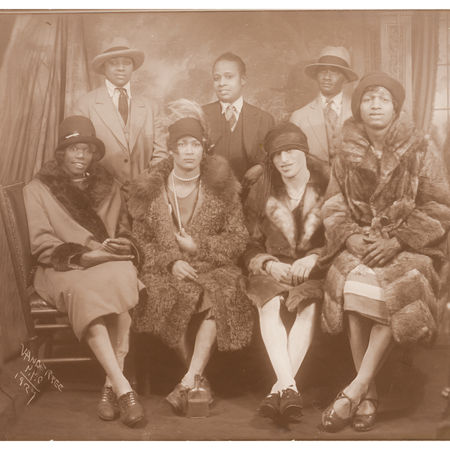
QUEER LENS - GETTY MUSEUM
BY STEFANO MASTROPAOLO
Queer Lens: Two Centuries of Desire, Bodies, and Resistance
At the Getty Center, an exhibition sheds light on the history of photography and the collective queer memory.
At a time when queer culture is once again under attack - censored, silenced, pushed to the margins - the Getty Center in Los Angeles chooses to give it space, memory, and visibility. With Queer Lens: A History of Photography, more than seventy works retrace two centuries of imagery, showing how photography has been both a tool of normative control and an instrument of liberation, a repository of marginality and a showcase of self-affirmation.
Since 1839, the year photography was born, categories of gender and sexuality have been subject to constant disciplining, medicalization, and repression. Yet even within - and against - this context, cracks have always opened, spaces of escape, fields of visual resistance. This is where queer art operates: in overturning the codes of representation, in giving body and light to what heteronormativity would have preferred to erase.
Curated by Paul Martineau with historian Ryan Linkof, the show does more than bring together masterpieces by icons such as Berenice Abbott, Robert Mapplethorpe, Man Ray, and Edmund Teske. Alongside these names, it places anonymous faces, clandestine images, intimate photographs that, by their very existence, affirm a right to exist.
One photograph encapsulates this power: Joseph John Bertrund Belanger’s 1953 black-and-white image of two young men kissing inside a photo booth. Their passion, amplified and sheltered by the booth’s narrow frame, would have been criminalized as “gross indecency” if displayed outside. Here, photography becomes a political act - wresting queer intimacy away from surveillance, transforming a daily gesture into an immortal image.
The exhibition unfolds across nine chronological sections, each intertwined with its social context. In The Pansy Craze, the underground clubs of the pre-Prohibition era come alive again - spaces where drag queens, drag kings, and gender-nonconforming performers invented alternative worlds.
Next to portraits of Josephine Baker (by Baron Adolph de Meyer) and Bessie Smith (by Carl Van Vechten), visitors encounter James Van Der Zee’s photographs documenting Harlem’s queer nightlife and Brassaï’s Parisian images of lesbian couples who dared to defy enforced invisibility.
The avant-garde section highlights Man Ray’s iconic photographs of Marcel Duchamp as Rrose Sélavy, turning cross-dressing into both a Dadaist and queer strategy, proof of how surrealism and camp culture helped dismantle binary categories.
The exhibition does not omit photography’s role in science - from Félix Nadar’s portrait of an intersex subject in the 1860s to Gaudenzio Marconi’s male nudes, staged as classical statues to cloak homoerotic desire in academic respectability. Seen today, even these images turn themselves inside out: what was once meant as classification becomes unintended testimony, an archive of nonconforming identities.
Alongside the main display, $3 Bill - a section organized by the Getty Research Institute - brings visitors into the collective wound of the 1980s AIDS crisis, with works like Donald Moffett’s poster in memory of Diego Lopez, a fierce indictment of the Reagan administration’s homophobic indifference.
The final section, The Future Is Queer, brings the story into the present. Featuring works from the last decade, many drawn from the Getty’s own collection, it highlights how rigid categories of heterosexuality and homosexuality are dissolving in favor of fluid, intersectional, plural horizons. With the digital revolution, queer imagery has ceased to be exoticized - it is now embedded in the fabric of everyday life.
The timing of the show could not be more pointed. As the ACLU reports nearly six hundred anti-LGBTQ+ bills under debate in the United States - including six in California alone - the Getty asserts, unapologetically, that the history of photography is also, and above all, a history of queer bodies, eccentric desires, and dissident subjectivities.
The lesson is clear: we have never been invisible. They only tried to erase us. And today, through these images, we reclaim the truth - that queer culture is not a margin, but a beating heart of modernity.
Gallery






















